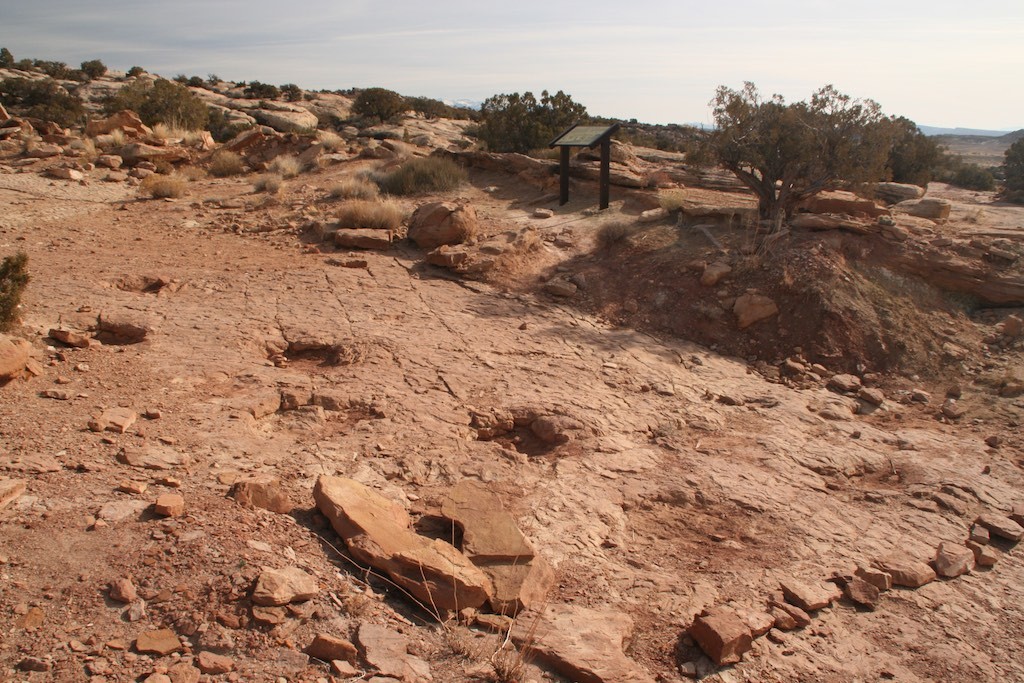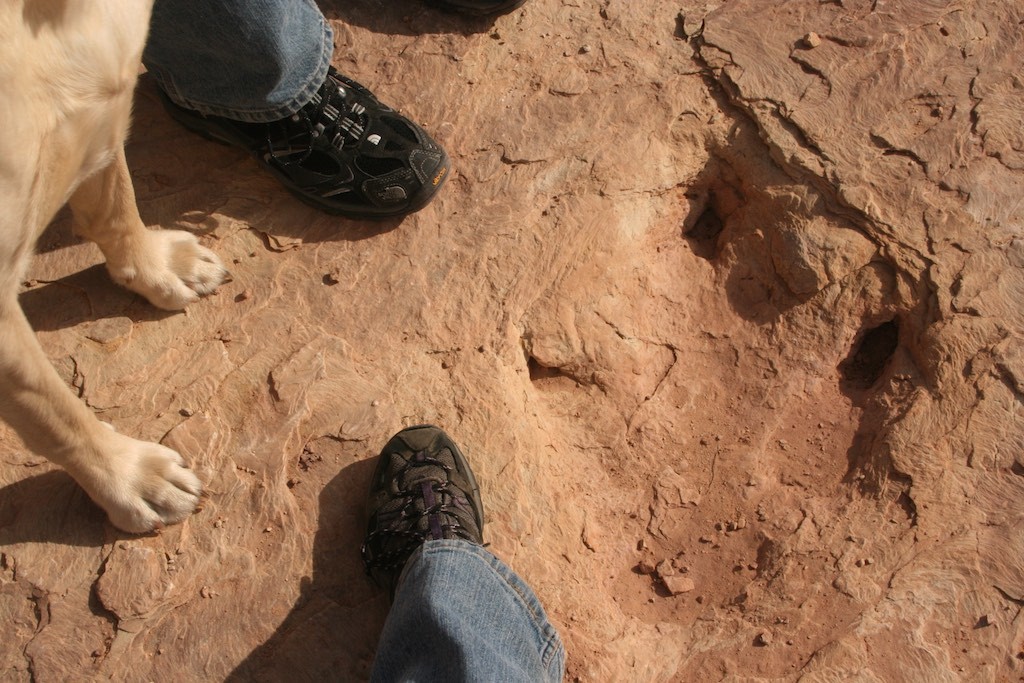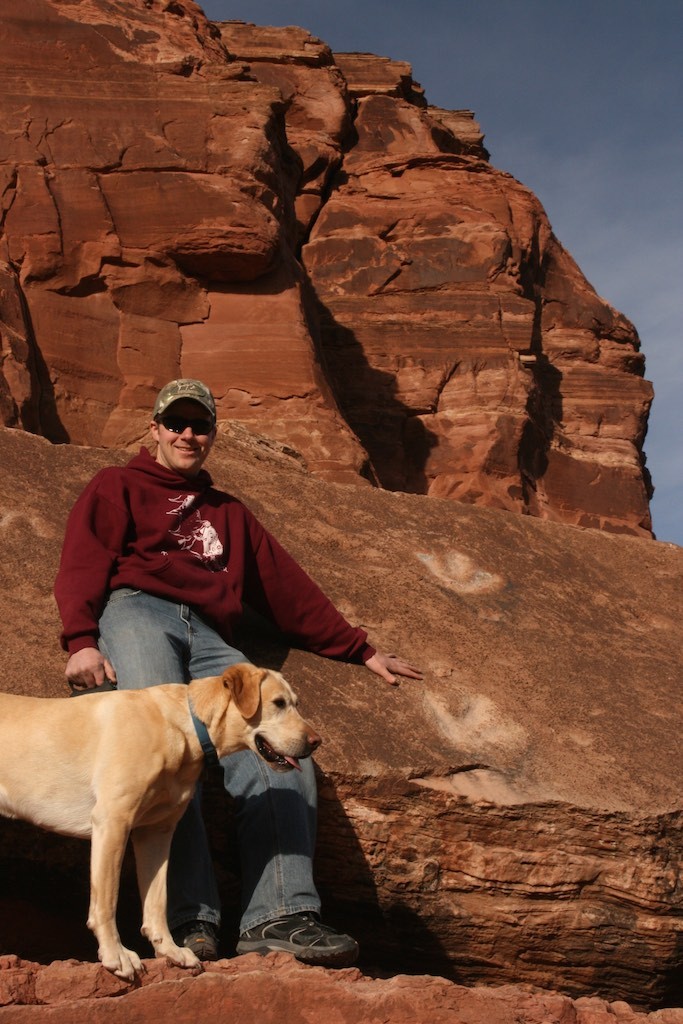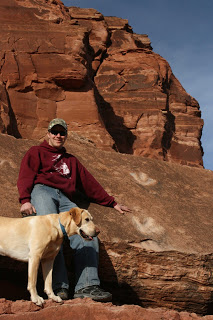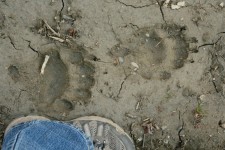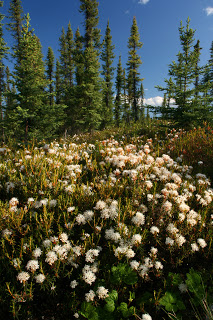Walking on a trail near Moab, Utah, I stepped over some large depressions in the bedrock but quickly stopped and realized that these were more than depressions, these were dinosaur tracks. Not the well-defined tracks I had envisioned but what 18-ton creature leaves detailed footprints in the mud. I could stand with both feet in a track and still have extra space.
Now knowing what to look for, I found several other tracks of a different dinosaur. This one was more defined and I could make out the three toes. I was stepping in a footprint made by a dinosaur 150 million years ago—an incomprehensible amount of time.
Finding fossils is exciting but touching these tracks was mystifying. The fossils I’ve found before I could relate to, like plant fossils, mud crack impressions and ripple marks. However, there is no present-day comparison for dinosaurs, nothing even close.
Trying to imagine the colossal size of the creature that made the tracks was beyond my imagination. Try to picture a dinosaur that weighed 18 tons crossing a muddy river bar looking for plants to eat. Later a 39-foot long Allosaurus walking on its hind legs crosses in the opposite direction looking for smaller creatures to eat with its powerful jaws and short forelimbs. The world was completely different 150 million years ago.
During the Jurassic period, the largest dinosaurs were up to 135 feet long and over 60 feet tall, making dinosaurs the largest land mammal ever. The tallest dinosaur was three times taller than a giraffe and the longest dinosaur was longer than three school buses. Dinosaurs were not the largest animal ever; that distinction goes to the blue whale at 70 feet long and 63 tons. Interestingly, one of the big paleontological mysteries is why dinosaurs grew so large back then and why no land animals are that large today.
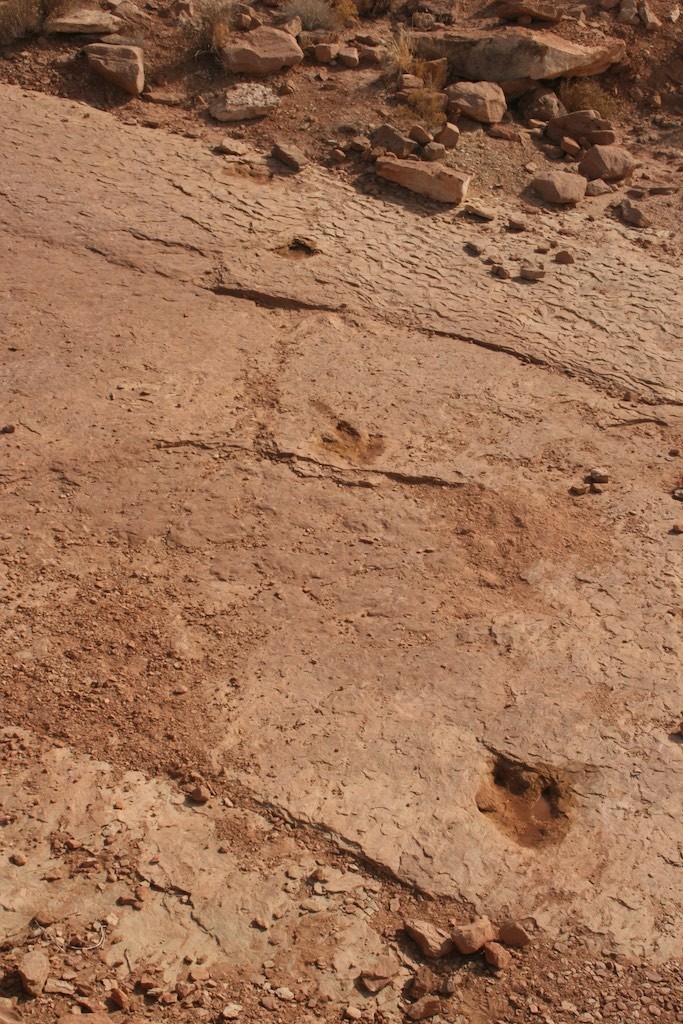
Studying dinosaurs is difficult since there is nothing to compare them to and the only way to study them is through fossils and tracks. Dinosaur tracks and fossils are continually being found throughout Utah and new species are still being discovered. As wind and water erode away each layer of sandstone in red rock country, a new layer of rock is exposed—maybe 150 million years after it was buried.
Sometimes, pure happenstance reveals treasures. In a location along the Colorado River, slabs of sandstone had fallen from an eroding cliff and upon hitting the rock below the slab cracked along a weak spot between different rock layers and exposed several dinosaur tracks. Like a textbook picture, the one piece of slab held the dinosaur imprints while the opposing piece held the casts of the tracks. These tracks had not been exposed to daylight for 190 million years. There are probably more tracks in that corresponding layer of sandstone high in those cliffs that someday will be exposed to daylight.
As wind and water keep eroding the red rock of Canyonlands and Arches country, more of those tracks will be exposed and will eventually be found by someone looking to walk in the tracks of dinosaurs.
Originally published January 2012. Updated March 2024.

